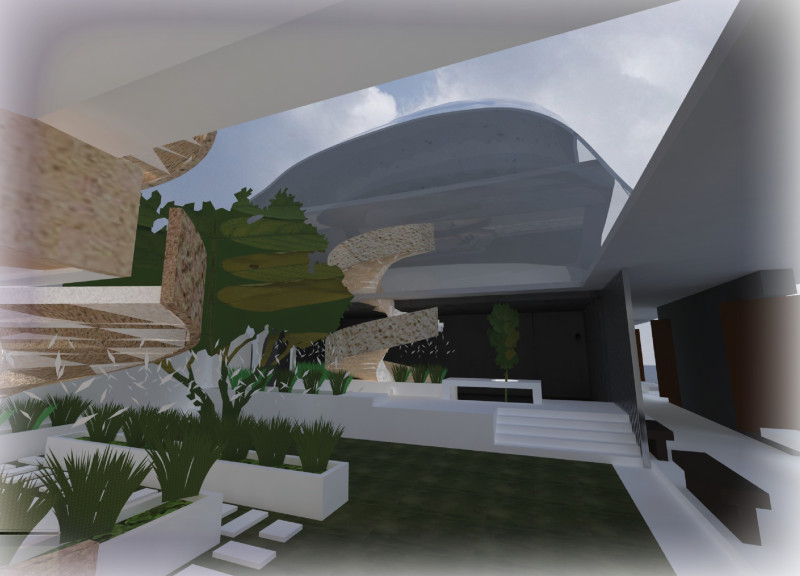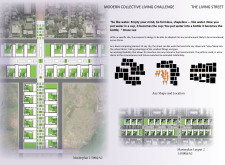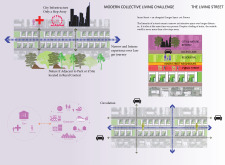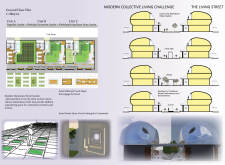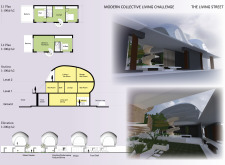5 key facts about this project
## Overview
Located in China, "The Living Street" project addresses modern collective living through a flexible urban design that harmonizes with diverse urban contexts. The intent is to revitalize underutilized areas by fostering vibrant communities and interaction among residents. The design philosophy, inspired by Bruce Lee’s concept of adaptability, aims to create spaces that fluidly respond to their environment, thereby enhancing connectivity and social engagement.
## Spatial Strategy and Community Integration
The spatial layout features a linear corridor structure that promotes an immersive experience while giving access to varied community amenities. Residential units are strategically modular, allowing for customized arrangements that meet communal needs. Semi-private inner streets serve as communal hubs, fostering interactions among residents, while the inclusion of green spaces and gardens enhances the ecological footprint and supports local biodiversity. The design emphasizes pedestrian circulation with a clear hierarchy of pathways and thoroughfares, allowing safe navigation for both pedestrians and vehicles.
### Materiality and Sustainability
The material selection is deliberate, focusing on sustainability and functionality. Concrete provides essential structural support, while glass façades enhance natural light and blur indoor-outdoor boundaries. Wood introduces warmth into communal areas, while metal elements contribute to a modern aesthetic. Native plants in the landscaping support local ecosystems and promote environmental health. Collectively, these materials not only serve practical purposes but also contribute to the overall aesthetic identity of the development, reinforcing its commitment to sustainable urban living.


